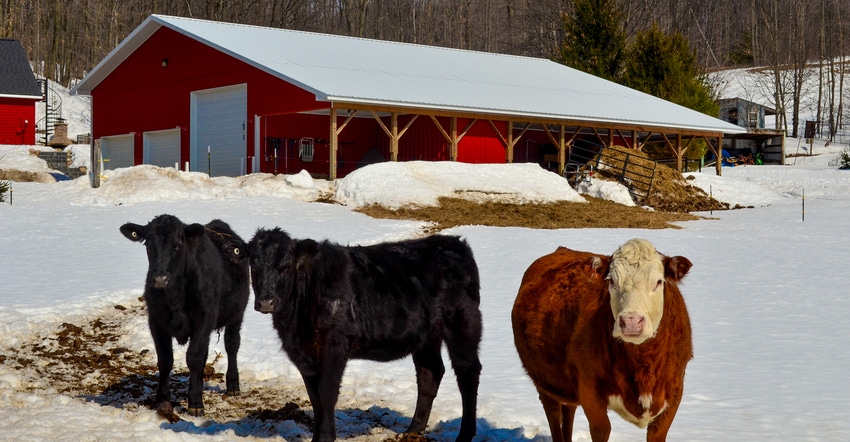January 28, 2019

Heavy snow is nothing new to farmers in New York and other areas of the Northeast. But there are proper ways of dealing with these heavy snow loads, especially when it comes to removing snow from barn roofs.
Building failures from snow loads can be attributed to several factors, including improper building design and construction; actual snow load exceeding designed snow load; and imbalance of snow load on the roof.
Pre-engineered post-frame agricultural buildings are designed to withstand a certain level of wind and snow loading and should withstand any snow loads that are below the “design value.” For example, if the snow load is 30 pounds per square foot and it was designed for 40 pounds per square foot, then there shouldn’t be a problem.
But not all buildings are made the same way.
So, how can you predict if a building is going to fail? For a pre-engineered building, check the actual snow load on the building against the design snow load.
 RIGHT WAY: Use a zoned approach to remove snow from a barn roof. The number of zones depends on the width of the barn or the span of the trusses.
RIGHT WAY: Use a zoned approach to remove snow from a barn roof. The number of zones depends on the width of the barn or the span of the trusses.

Wood structures will show stress before they fail. Listen or look for the following signs:
��• Creaking or moaning in the building
• Bowing of truss bottom chords or web members
• Bowing of rafters or purlins
• Bowing of headers or columns
If these signs are present, consider evacuating animals from the barn, and definitely evacuate people from the structure.
Pre-engineered metal structures will most likely fail without warning, so be especially careful.
Many farmers like to shovel snow off the barn roof to save their building from collapsing. But only experienced people who are properly trained and protected should do this.
Shoveling the roof without the proper approach can actually cause more damage by creating an unbalanced load on the roof.
 WRONG WAY: Removing snow unequally from a barn roof can cause unbalanced loads. If snow is piled over smaller portions of a roof, rather than spreading the load equally, structural failure is more likely.
WRONG WAY: Removing snow unequally from a barn roof can cause unbalanced loads. If snow is piled over smaller portions of a roof, rather than spreading the load equally, structural failure is more likely.

With that, here are some Do’s and Don’ts of shoveling snow from a barn roof:
Do’s
• Remove snow using a systematic, zone removal approach. The number of zones depends on the width of the barn or the span of the trusses, but in all cases, snow removal should start with the eave areas.
• Remove snow from both sides of the barn as equally as possible. As snow is removed from the roof, be sure to remove snow from the barn sidewalls as deep snow piled against the walls can cause barn failure and ventilation issues.
• Continue working toward the roof peak, removing snow in a systematic and balanced approach until all snow is removed.
Don’t
• Remove snow unequally from a barn roof. Unbalanced loads can cause the unloaded side of a truss to lift, possibly compromising the connection at the post. Work back and forth from side to side as you remove snow, or better yet use a crew on each side simultaneously.
• Pile large piles of snow atop the roof. A structure may be able to support a snow load when it is spread equally, but once loads are combined over smaller portions of the roof, structural failure is more likely.
Source: Cornell Cooperative Extension, which is solely responsible for the information provided and is wholly owned by the source. Informa Business Media and all its subsidiaries are not responsible for any of the content contained in this information asset.
You May Also Like




